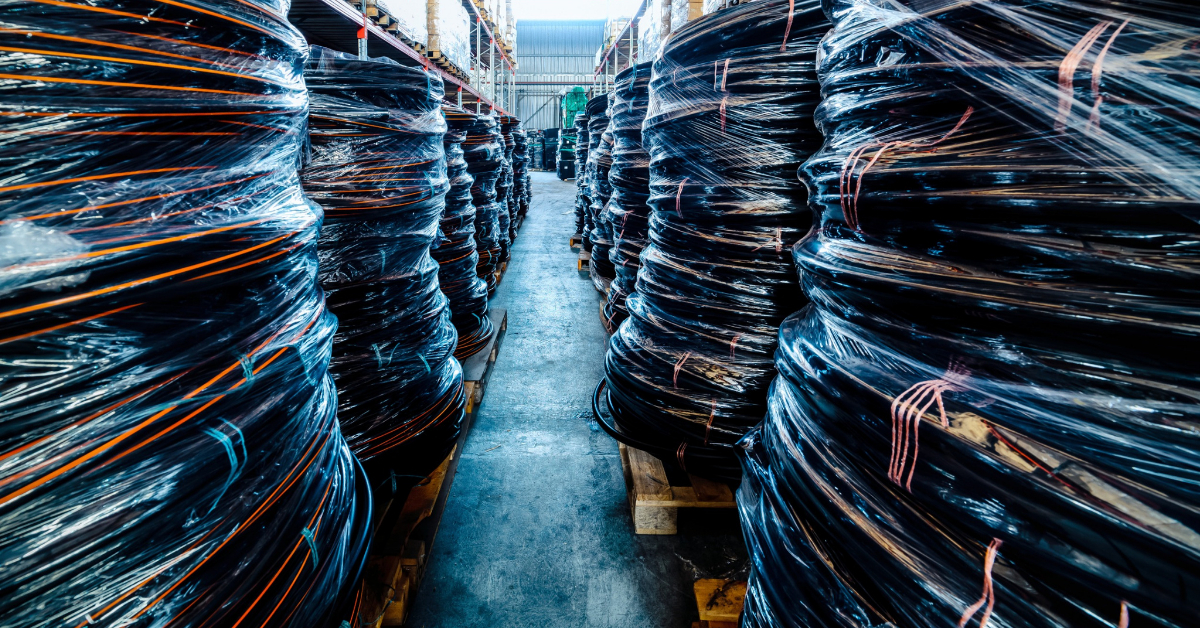There are basically three methods of making the rubber lining of a roller.
The first one, which is faster and cheaper but has poor technical and pressure resistance performance, is gumming by cold bonding (our company rarely does this).
The second method is by pressure molding i.e. the rubber is injected or pressed inside a mold and vulcanized (it requires the making of a mold and is more suitable for large series of parts of the same type).
The third method is rubberizing through autoclave vulcanization, which is suitable for single parts as well as large series. It allows high quality on rubber-metal adhesion and higher technical characteristics depending on the different compounds available, thanks to the “baking” process, which takes place slowly; no mold construction is required, the over material is applied and then removed by means of precision grinding; this type of process one of our strengths.
The manufacturing process of rubber rollers
Metal parts cleaning and adhesive application
The first part of the production process is to clean and degrease the metal parts by washing and sandblasting.
several layers of primer are Then applied to the metal parts.
Preparation of the compound
Rubber is mixed with vulcanizing agents, accelerators, stabilizers and other additives, in order to get the base compound
There are different types of compounds depending on the type of work the cylinder will be performing, the choice of rubber to be installed is crucial (eg. resistance to chemicals, resistance to pressure, ozone, high temperature, abrasion…). Our technicians can support the customer in choosing the most suitable compound.
Application of the raw rubber into the metal part
Once the raw compound has been prepared by means of a large mixing machine, it is loaded onto an extruder that will transfer it to the previously prepared metal roller.
Vulcanization:
The roller is put into a machine called Autoclave and in a slow process it bakes the rubber.
Surface Finishing:
The surface of the roller is finished by grinding to achieve the desired roughness and size of the final roller.
Criticality: The finishing must be very precise and uniform, to avoid operating problems and prolong the life of the roller.
Quality control:
Each roller undergoes rigorous quality control tests for size, strength, hardness and other characteristics.
Criticality: Quality testing is crucial to ensure that each roller meets the required standards. Undetected defects can cause subsequent operational problems.
Packaging and shipping:
Rollers are securely packaged and shipped to customers.
Criticality: Packaging must protect the rollers during transport. Errors in packaging can cause damage to the product.
Each step in the process has its own critical issues, and strict control at each step is essential to ensure the production of high-quality rubber rollers. Management of process variables, constant monitoring, and compliance with quality standards are critical to achieving a reliable, high-performing end product.
Technological advances in the industry
The rubber industry has experienced significant technological advances over the past 20 years, driven by innovations that have radically transformed the production and use of rubber products. One of the major developments involves the advancement of rubber compounds, enabling the creation of materials that are more durable, resilient and adaptable to different environmental conditions.
In addition, technology has implemented manufacturing processes, with the introduction of more sophisticated and efficient machinery. Mixing, extrusion and curing have become more precise and faster processes thanks to automation and robotics. This has led not only to greater production efficiency, but also to a reduction in waste and production costs.
Another key area of innovation refers to the design and customization of rubber products. Advanced modeling and printing technologies enable the creation of customized components tailored to the specific needs of industries and customers. This has opened up new opportunities for specialized applications in industries such as automotive, manufacturing, and electronics.
Environmental sustainability has emerged as an imperative in industry research and development. More advanced recycling methods, eco-friendly materials, and environmentally friendly manufacturing processes are becoming more prevalent, responding to growing environmental awareness and stricter regulations.
Why rely on Warca for the production of rubber rollers
There are several reasons to rely on Warca for rubber roller production. Here are three key reasons:
Expertise: Warca has been in the industry since 1955 and has acquired a pioneering position in the production of rubber, silicone and polyurethane coated rollers for casting. With over 65 years of experience, Warca offers established expertise in roller coating, demonstrating a deep understanding of the industry and the latest technologies.
Quality: Warca pays great attention to the quality of their products. They use premium compounds and conduct selective quality testing on all their products. This commitment to quality ensures that the rubber rollers produced by Warca are reliable, durable and meet the highest standards.
Precision and Reliability in Manufacturing: Thanks to the modern CNC machines used by Leonardo Da. Vi. Meccanica (a Warca Group company), the precision in the finishing of manufactured goods has reached extremely high standards. This means that the rollers produced are not only of high quality but also precise in their specifications. In addition, the ability to make mechanical parts by milling and turning, then rubber coated, highlights Warca’s versatility and comprehensive approach to manufacturing.
Relying on Warca means benefiting from decades of experience, commitment to quality and cutting-edge technology in the rubber roller industry.


